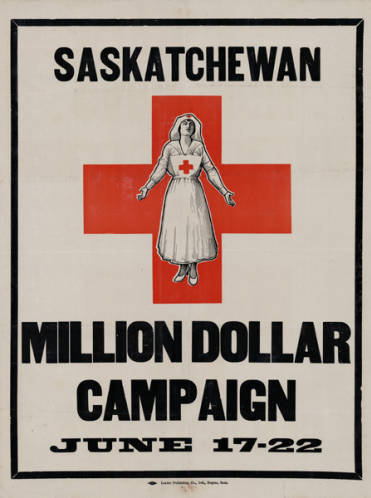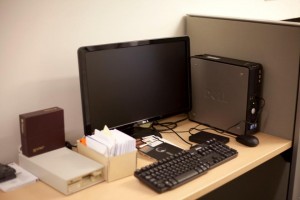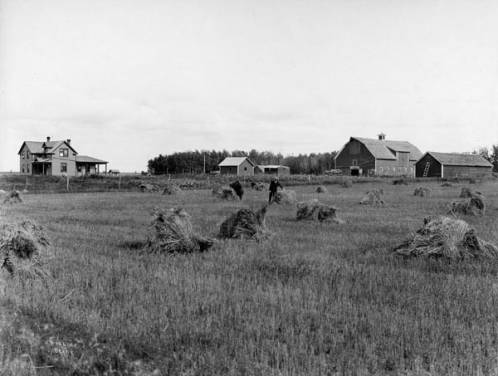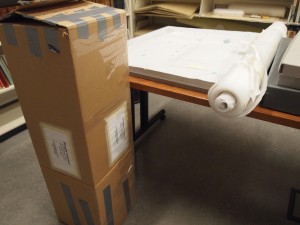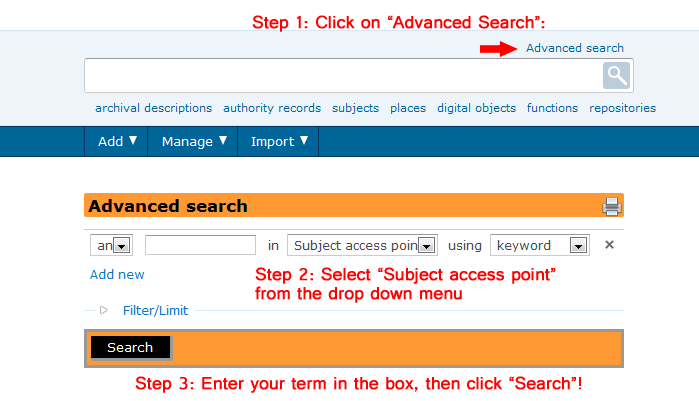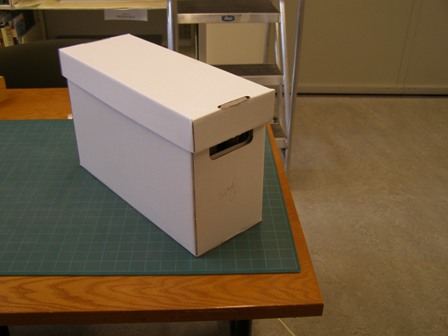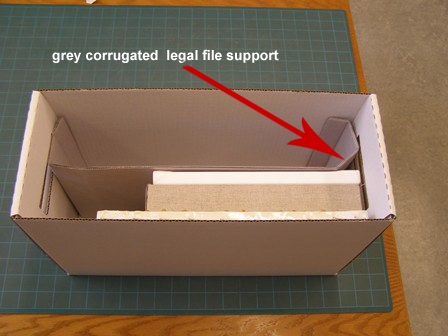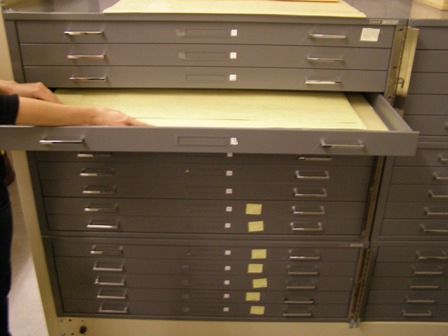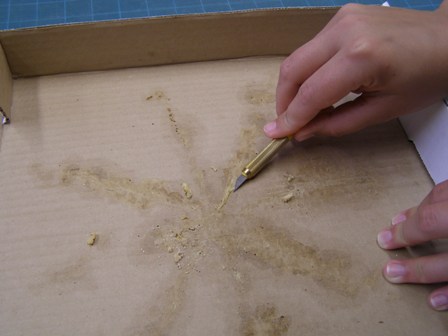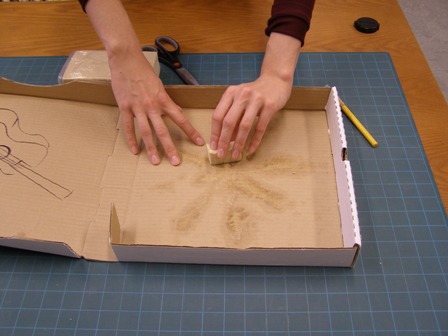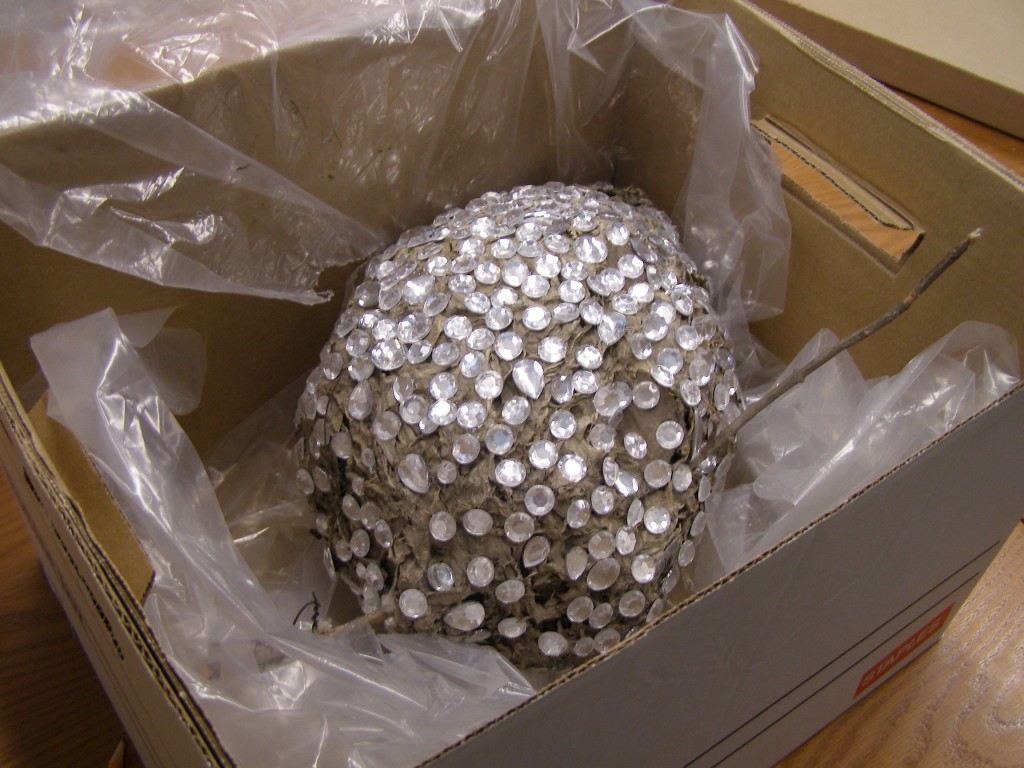Remembrance Day closure
Posted on November 9, 2012 @9:55 am by sromkey
Rare Books and Special Collections, University Archives and the Chung Collection will be closed for Remembrance Day on Monday November 12, as are all branches of UBC Library (the Irving K. Barber Learning Centre is open but library operations within the building will be closed).
In honour of Remembrance Day, we’d like to feature one of our collections of wartime ephemera:
This poster is part of our SPAM (Special Collections Pamphlet collection) and has been digitized as part of the World War poster collection, which features 40 posters from World Wars I and II. To learn more about our ephemeral collections, please visit our Ephemera Research Guide.
UBC will be holding a Remembrance Day Ceremony on November 11 in the War Memorial Gym. Details are available on the UBC Ceremonies website.
No CommentsPosted in Announcements, Collections, Research and learning, Uncategorized | Tagged with
Day of Digital Archives: our experience so far
Posted on October 12, 2012 @9:00 am by sromkey
Today is the Day of Digital Archives, and I’m really pleased to be reporting on our experience preserving digital archives here at Rare Books and Special Collections! For the uninitiated, preserving digital archives is extremely challenging because of rapidly changing technology and the relative fragility of digital records- this is why a number of archivists have set aside a day to share experiences and get the word out there. You can check out the main Day of Digital Archives blog to read posts from other archivists, or follow the activity on Twitter using the hashtag #DayofDigArc.
All of the archival collections that we acquire here at RBSC come from external sources, usually donated to us by the person or organization who created the records to begin with. Almost every living creator of archives who I interact with is creating records in a digital form and in many cases, at least some of these records never become paper- this is what archivists call born digital records.
So what is an archivist to do? There has been a lot of research in this area, and tools developed, but as a whole the archival profession is no where near as experienced with digital records as we are with analogue records (paper, photographs, etc).
Here at RBSC we have been fortunate enough to partner with our Digital Initiatives unit, who are also very interested in digital preservation because they want to safeguard all of the digital material they create through digitization projects, and that comes to the library through cIRcle, our institutional repository. The Digital Initiatives Unit contracted local software development company Artefactual Systems to help us through this problem. We’re in pilot testing now- you can read a report on their website about our progress so far.
This is a diagram of the basic workflow we’re piloting in RBSC now:
We have acquired material over the years on external digital media- floppy disks, optical disks, and as a recent development in our pilot project, an external hard drive. We are using Archivematica open-source software as the central piece in our digital preservation system. It uses a number of micro services and follows the OAIS model to create a submission information package (SIP) from the external media; stores away an archival information package (AIP) using preservation-friendly formats and the original format (packaged with metadata about the records as well); and creates a dissemination information package (DIP) to create access copies for researchers to use. We’re using ICA-Atom software as our access system, and will be moving all of our archival finding aids into that system soon, so there will be a “one stop shop” to search for archival material in both digital and analogue formats.
This diagram makes the whole process look incredibly simple. The devil is, of course, in the details. We have had our fair share of technological and intellectual challenges along the way, and we’re still overcoming a lot of them now. The future of our born-digital acquisitions is very much at the front of my mind. Probably 90% of my work as an archivist is still in the analogue realm, but over time that will shift. I would anticipate that at some point in the future, most archival acquisitions we make will be born-digital, or a hybrid of analogue and born-digital. Some archives employ archivists with the title “Digital Archivist” who are tasked with managing born-digital acquisitions exclusively- I wonder if someday the “digital” part of the title will just be considered redundant!
We have more questions than answers at this point, but some of the things we will be tackling in the coming months are:
- Most of our analogue archival processing at RBSC is performed by students from the School of Library, Archival and Information Studies. How do we integrate them into our workflow for digital processing as well?
- We are making a fantastic acquisition 0f born-digital images from a photo journalist (stay tuned!). The photojournalist is extremely organized and embeds descriptive metadata into all of his images. How can we leverage this metadata and make it available to researchers?
- Part of our pilot project has been to process digital media donated to us over the past number of decades, including 3.5″ and 5.25″ floppy disks. The processing is extremely time consuming. Would it be more efficient to out source some of this work?
- The transfer or licensing of rights in born-digital material is very different from analogue material. How will born-digital acquisitions change the way that we think about the intellectual property of our archival donors and creators?
The one answer I do feel like I have right now is that, it’s time to start trying and sharing experiences. I think a lot of archivists (especially those of us who are just “normal” archivists without fancy digital titles!) are intimidated by the complications of digital preservation, and I won’t lie, it is a complicated endeavor. But there are things that you can do to get started:
- Read this report from OCLC on First Steps for Managing Born-Digital Content Received on Physical Media. It is a really straight-forward outline of how to get started and promises that you will be able to sleep at night if you follow their advice!
- Find partners in your institutions who might be interested in digital preservation goals. This might be a digital initiatives unit, an institutional repository, or the IT department.
- Talk to local colleagues in your area- maybe there would be interest in sharing experiences and ideas.
- Attend workshops and professional development opportunities. For example, keep an eye on the Archivematica homepage- you will see that Artefactual often attends conferences and offers workshops on their software (did I mention that Archivematica is free and open source?)
We’d love to hear your comments and perspective on digital preservation issues- please leave us a comment below!
1 CommentPosted in Collections, Research and learning, Uncategorized | Tagged with
Thanksgiving closure: harvest photograph
Posted on October 5, 2012 @9:00 am by sromkey
A reminder that Rare Books and Special Collections, University Archives and the Chung Collection will be closed for Thanksgiving on Monday October 8, as are all branches of UBC Library (the Irving K. Barber Learning Centre will be open, but library operations will be closed).
Thanksgiving is a time to celebrate the harvest, so we think this farm photograph from the Chung Collection is appropriate to the season:
The photograph is part of an album taken by the Canadian Pacific Railway Company Department of Colonization ca 1920 in rural Alberta and Saskatchewan. The photograph has the following inscription:
“The home of F. Ray, a prosperous farmer in the North Battleford district. Mr. Ray began farming in this district in 1903 with only $45; he now has 1,300 acres of the “finest land that lays out of doors”, 75 horses, 240 head of cattle and a full line of machinery, which is all his. He threshed 17,000 bushels of grain this year. He says: “There is nothing to it; this is the only country for a man to get a start in if he is alive.” ”
Because the Chung Collection covers the operations of the CPR so well, and the CPR was heavily involved in colonizing farm land in Canada, it is a great resource for researching the history of agriculture in Canada. Try using the advanced search and trying keywords such as “farm,” “agriculture,” and “colonization.” You can narrow your search using the type of media, dates and more.
No CommentsPosted in Announcements, Collections, Research and learning, Uncategorized | Tagged with
Missionary Printing Presses Exhibition
Posted on September 22, 2012 @3:36 pm by kalsbeek
UBC Library’s Rare Books and Special Collections (RBSC) is pleased to present “‘The Iron Pulpit’: Missionary Printing Presses in British Columbia.” Featuring materials produced on missionary printing presses in British Columbia between the 1850s and 1910s, this exhibition situates its subject in contexts of Indigenous-Christian encounter, colonialism, and print culture in the province.
The exhibition, until December 8, 2012, is located in RBSC, on level one of the Irving K. Barber Learning Centre, and is open to the public Monday to Friday, 10am to 4pm, and Saturday, 12pm to 5pm.
A PDF of the exhibition catalogue, which includes an introductory essay, detailed item descriptions, and a checklist of extant missionary printing press imprints, is available here.
“‘The Iron Pulpit'” was curated by Alicia Fahey (PhD Student, Department of English) and Chelsea Horton (PhD Candidate, Department of History).
No CommentsPosted in Exhibitions, Uncategorized | Tagged with
Final thoughts: Unpacking the Douglas Coupland fonds
Posted on September 21, 2012 @2:46 pm by sromkey
We have come to the end processing the 2012 accrual to the Douglas Coupland fonds, but it is just the beginning for researchers- we’re looking forward to having you in the reading room! As the supervising archivist, this has been a really interesting and rewarding process. I had some questions for our student archivists that I thought our blog readers might be interested in too:
1. When you first started this project, you worked together to come up with a running title for the blog posts and a graphic. Can you tell the story of how you came up with the “This is really random” theme?
Group: When we first received the boxes and discussed our project plan, the three of us spent some time together on the first day taking an initial survey of what the accession contained – poking through boxes, oohing and ahhing, and reviewing our intended approach in light of what we found. We were amazed by the sheer diversity and seeming chaos of the accession as we first received it, and also delighted by some of the more unique finds we stumbled across! Everything seemed to be organized so, well… randomly. Naming the blog was in the back of our minds that first day, and when we came upon a box of t-shirts that contained one that said, “This is really random,” it felt like a sign. We were all very quickly in agreement that not only did it seem fitting, but that Coupland himself would probably appreciate the tongue-in-cheek humour of it.
2. Early in the blog posts, you discussed how the Coupland fonds seems to lack what archivists call “original order.” Did your opinion change as you worked through the accrual? Has this project made you think differently about how to approach arrangement with other archives projects?
Group: We are fairly certain that what we received was a product of Coupland sweeping things into boxes, and does not necessarily reflect how these items were grouped and arranged around his workspace when they were still being created and actively used. Nevertheless, we feel that our approach was effective – we maintained the received physical order, but still managed to organize the materials according to a coherent intellectual arrangement (by series) that worked well with previous accruals. This way, a researcher can view a file list to see the received (physical) order, but they can also view the material grouped by the kinds of different “work hats” that Coupland wears (or functions he performs) – as an author, a playwright, a designer, an artist, and so forth.
This project did make us realize the critical importance of the deposit interview. We were unable to conduct an initial accession interview to to ask Coupland about his work habits and spaces, his personal systems of organization and arrangement, etc. In the future, and especially with creative cultural workers such as Coupland, we would want to do our best to ensure that this could happen. This would give us a better sense of what we were seeing, how it was packed up, what we could expect to find, what it might relate to, and how much is likely to have changed between the original and received orders.
3. I’m guessing that before we even cracked the boxes open you knew this project would involve some pretty unique content. What is your favorite/most random/most surprising object?
DG: I’m still hung up on the bejeweled hornet’s nest – I didn’t see that one coming. But other favorites for me included the baby Digital Orca maquette (file 179-05), and the cheese-encrusted pizza box with calligraphic doodles on top (file 179-24) – you just never know what you’re going to find in an artist’s fonds!
LH: My favourite (if I have to choose) is actually a number of little things that cropped up periodically throughout the entire fonds – movie ticket stubs. Every now and then a box would produce a ticket stub (or two or three), providing a little glimpse into Coupland’s everyday life and, maybe, the ideas and images that were influencing him at that moment. These, among other things, received the tag Ephemera.
SH: I was most surprised by the crusty pizza box that Dan mentioned above. I did not expect to find an item like this mixed in with all the other records we processed. Other interesting objects include two maquettes of his Digital Orca sculpture and a styrofoam “phantom” leg from his Terry Fox memorial project.
4. Although there are standards and best practices that archivists follow as a whole, ultimately arrangement and description is typically a solo activity (archivists even have a nickname for those who work alone- “Lone Arrangers”). Did working as a group pose any challenges? Were there any points of practice or theory that you disagreed on? (Don’t be shy! We’re all friends here!)
Group: Actually, we found that our varying experiences and schedules worked really well together! We maintained a shared document throughout our work so we could discuss strategy when challenges were encountered, and generally reached consensus as to what we should do rather quickly. Because of the nature of this fonds it was actually really helpful to bounce ideas and questions off each other.
There were a few challenges that popped up. The most significant was probably our experimental deployment of the taxonomic subject terms. In the end, we ended up needing to delete, move, and/or modify some of the tags that we had created on the fly in order to make one cohesive taxonomy. This isn’t surprising – we were working with a new functionality, but ultimately we think it came together really well.
5. Did you learn anything about Coupland’s artistic or writing practices that you think researchers will be interested or surprised to learn?
Group: One thing in particular that amazed all of us was just how broad Coupland’s interests and artistic practices are. He’s got work in all directions, from his many novels, to his fashion and furniture design projects, to city planning – and his V-Pole project (see file 184-05), unveiled with Vancouver mayor Gregor Roberston earlier this year! As archivists though, we can’t really make claims about what will surprise researchers. Our job is merely to provide the best access we can to the materials, and leave it to the researchers to draw their own conclusions.
6. As archivists, we get the privilege of the “first view” of a person or organization’s work through their archives, but we ultimately pass the torch along to researchers, scholars, and even casual users who make the real connections. What do you hope researchers will get out of this collection?
Group: Appreciation. Coupland is such a multi-talented artist, and there are so many unexpected items in this collection to surprise and delight researchers and fans alike.
Context. To be able to see all the initial steps, the drafts, the sketches, the correspondence that precedes a finished work – this is invaluable to understanding the creative process of a creator such as Douglas Coupland.
It would also be interesting if someone took the time to compare all the dates, travel stubs, and correspondence to figure out which projects were worked on simultaneously, which led to other projects, and in what ways an idea comes to full fruition.
Best of luck to the researchers!
No Comments
Posted in Collections, Research and learning, Uncategorized | Tagged with Coupland
Unpacking the Douglas Coupland fonds: Taxonomies Part Two: How they’ll help you get to the good stuff
Posted on September 6, 2012 @7:20 am by sromkey
Earlier in this blog, we posted about how we are implementing the use of taxonomies to help researchers navigate the new accrual to the Douglas Coupland Fonds. We’re just putting the finishing touches on those tags now, and thought we would offer our readers a first look at what we’ve done.
To review: taxonomies in ICA-AtoM are similar to the kind of tags you’ll see in use everywhere on the web these days, such as on Flickr photographs, Amazon albums, and even blog posts such as this. In ICA-AtoM (the open-source, web based archival description software that Rare Books and Special Collections is currently implementing), these are also known as “access points”. When we create a tag (or access point, or taxonomic term) and associate it with a file, a hyperlink is created on the description page. When you click on the link, ICA-AtoM will bring you to a search results page showing all other archival descriptions that also have been tagged.
This is useful in several ways. First, all the tags we’ve used are indexed separately than the simple searchbar results, so if for example, you wanted to find materials on Generation A, a simple search will return all entries that mention Generation A in their description, including those from earlier accruals that haven’t been retroactively tagged yet (or anything we might have forgotten to tag!). Searching this way, you might find files 181-37 and 181-38, “Generation A manuscript”. As you might expect, you’ll find “Generation A manuscript” in the “Literary projects” series of the Douglas Coupland fonds.
However, there are several files in the accrual that relate to Generation A but don’t mention the book explicitly in the description! They might be correspondence, or interviews, or book reviews, or even photographs – and might therefore be kept in a different series. A simple search for Generation A might never turn up these important related documents… but this is where the magic of taxonomies comes in. So if you are looking at file 181-37, “Generation A manuscript,” and you clicked on the Access point hyperlink, “Generation A,” you’ll be redirected to a showscreen listing all files from all series that we have tagged with the term. This way, you could find file 184-19, “Correspondence with Janklow & Nesbit Associates,” which contains a cover letter that originally accompanied Coupland’s agreement with Random House Canada for the publication of Generation A, or file 185-28, “2009 Rogers Writers’ Trust Fiction Prize award finalist certificate,” which you might not have known Coupland was presented for Generation A (he didn’t win the prize that year).
Finding a file with a hyperlink and then clicking it is not the only way to get these results either – you can also use an advanced search to start searching with a taxonomy term right away. To do this, follow these simple steps:
1. Click on the “Advanced search” link above the search bar
2. Enter the taxonomy term you wish to search for in the blank search space provided
3. From the drop-down menu next to it, select “Subject access point
4. Click search!
You can also use this advanced search to search for multiple terms at once. Notice the dropdown menu before the search field, that contains “and”, “or”, and “not”, as well as the “add new” link just below the search field? These are powerful tools for building complex searches! Try out searches such as “Player One OR Massey” (will return you anything tagged with either of those terms – meaning you’ll get results about Player One as a book, and possibly anything Massey-related that Coupland has done that was not associated with Player One), or maybe “Generation X AND Publicity” to see clippings that Coupland has collected about his first novel over the years.
Because ICA-AtoM’s taxonomy module is still developing, there’s currently no easy way to view all of the terms we’ve made use of in the Coupland fonds. But not to fear, we’ll be uploading a PDF of all the terms we’ve used for researchers to browse before the accrual goes live.
Happy hunting!
No CommentsPosted in Collections, Research and learning, Uncategorized | Tagged with Coupland
Take a break from your research: Labour Day closures
Posted on August 31, 2012 @2:46 pm by sromkey
A reminder that Rare Books and Special Collections, University Archives and the Chung Collection will be closed on Monday September 3 for Labour Day, as will all branches of UBC Library (the Irving K. Barber Learning Centre building is open, but the library functions will be closed).
On the subject of Labour Day, you may be interested to know that labour unions and workers’ issues is a strength of the collections here at RBSC. We hold the archival collections of many labour unions from around the province of B.C., including many primary source industries (forestry and woodworking unions, mining, steelworkers, etc) as well as other industries such as public servants and the retail and service sectors. We also have the archival collections of many labour activists and political collections.
To get a broad overview of our labour collections, you can do an advanced search in the library catalogue: under “type,” choose “Archival/mixed collections” and use keywords such as “labour”, “union”, and/or keywords related to the industry that you are interested in researching. For online content you may also wish to search the UBC Digital Collections for keywords like “labour” or “union.”
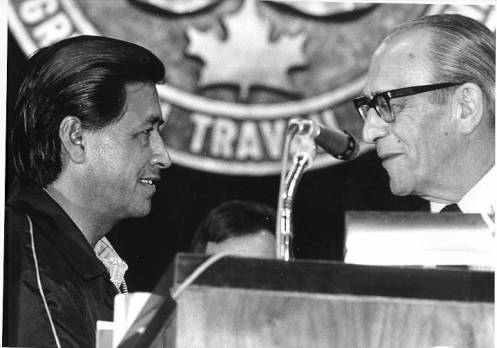
Cesar Chavez and Donald MacDonald at a convention of the Canadian Labour Congress, 1974, Fisherman Publishing Society fonds
Posted in Announcements, Research and learning, Uncategorized | Tagged with
Unpacking the Douglas Coupland fonds: A world of boxes
Posted on August 23, 2012 @6:54 am by sromkey
Archivist’s note: We also could have called this post, “Repacking the Douglas Coupland fonds.” We get a lot of questions from the general public about how we choose storage for archival material. Many of these questions can be answered with common sense, sometimes we use more specialized knowledge. Below our student archivists explain their storage choices for this collection:
In previous posts, we discussed preservation practices regarding some of the incredibly unique items that are part of this accrual. To switch things up a bit, we thought we would take you on a little tour of our oh-so-ordinary storage practices which help ensure the long term preservation of archival material.
The most common type of storage is the record storage box.
Typically, these boxes are used to store paper records (go figure!). In the case of the Douglas Coupland fonds, we also occasionally house other items in these boxes – such as the small canvases shown below. Note the file support that ensures the items don’t slip and slide around inside the box.
Some items are too large and unruly to be contained in a typical records box. In cases such as these, we store items in oversized boxes like these:
Items should never be placed in boxes that are too small or too large. You don’t want the material to be squashed or knocked about. If material doesn’t fit in any of the standard sized storage containers, custom boxes can be ordered to fit the exact dimensions of the items. Custom boxes not only ensure that we safely and properly enclose items, but also allow us to maximize space in the vault — a hot commodity in archives!
Some items need to be stored flat. In this fonds, we have large photographs and poster boards that would warp if stored vertically. Map cabinets are the perfect solution for these items.
I bet you had no idea we put so much thought into something as simple as a box!
No CommentsPosted in Collections, Research and learning, Uncategorized | Tagged with Coupland
Unpacking the Douglas Coupland fonds: No food allowed! Or, cleaning up the cheese
Posted on August 20, 2012 @7:49 am by sromkey
Archivists note: This past week was a busy one: the student archivists worked hard on packing the accrual into appropriate containers for storage. All collections need to be re-housed into archivally appropriate containers, but this one is a particular challenge to wrangle because of the oddly shaped and sized objects. Below the students describe some basic conservation work on one of the collection’s more atypical items…
In our last post, we talked about how we approached processing a bejeweled hornet’s nest. As it turns out, this wasn’t the only unusual or unique item that required extra thought in terms of preservation and special storage. This old pizza box with calligraphy (complete with grease stains, encrusted cheese, and lingering pizza odor) needed to be cleaned before being permanently housed as part of the fonds.
In this case, the stuck-on food particles were of particular concern. As a general rule, no food or beverages are allowed inside RBSC. Not only could spilled coffee or ketchup stain or permanently damage the materials, but lingering crumbs could attract certain, ahem…undesirable patrons—namely critters like cockroaches or, heaven forbid, rodents.
So what did we do with the crusty pizza box, you ask? We began by isolating the pizza box so that it wouldn’t contaminate any of the other materials. A separation sheet marks the pizza box’s original location in relation to the other materials and directs future users to its new “home”—a special archival quality box that it gets all to itself. The next step was to do some surface cleaning to remove the crumbs, cheese bits, and as much of the grease stain as possible.
We began by gently scraping off bits of cheese and crumbs with a scalpel. We took great care to not damage the box and to fully isolate and dispose of the rogue crumbs in the nearest rubbish receptacle. Our next step was to give the box a thorough cleaning with a chemical sponge. These sponges were originally designed to remove soot and grease caused by fire damage, but they work wonders on dirty archival documents. The stain is still visible on the Coupland pizza box, but the process did remove some of the excess grease.
Before being stored in its archival box, the pizza box was sealed inside a large Ziploc bag to lock in any remaining odor or microscopic food particles that might attract pests.
Finally, this item, like all special collections materials, will be stored inside RBSC’s environmentally storage areas. This item and most other paper-based archival material will live in the Automated Storage and Retrieval System (ASRS) which maintains a temperature and relative humidity that makes it very hard for most pests to live in.
For more information on the topic of pest management, please visit the Northeast Document Conservation Center website.
So, even though you may not be able to eat your own slice of pizza while visiting RBSC, you can always access and take a whiff of Coupland’s pizza box—the musty pizza smell is sure to cure anyone’s persistent tummy grumbles.
No CommentsPosted in Collections, Research and learning, Uncategorized | Tagged with Coupland
Unpacking the Douglas Coupland fonds: how to nest a nest
Posted on August 7, 2012 @10:39 am by sromkey
Question: What glitters and was once home to thousands of swarming insects?
Answer: The contents of file 184-38 of the Douglas Coupland fonds at UBC’s Rare Books and Special Collections.
This dazzling bejeweled hornet’s nest has presented us with a unique range of questions… so let’s take a brief tour of the archivist’s approach to this wonder of nature.
Let’s face the most important question. Why is this hornet’s nest a part of the Douglas Coupland fonds in the first place? If you’re familiar with Coupland’s work you may recall his nest sculptures. This nest that now resides in UBC’s vault is not of his own making, but it does communicate his exploration and interest in these objects. But why is it bejeweled? We’ll leave that one to researchers to figure out! [Archivist’s note: Coupland also made an addition to his archives in 2010 which included wasp-nest paper in various stages of being “hand-chewed” by Coupland- this material resides in boxes 152 through 154 in the collection].
The idea of bringing an object that was created by insects and has been who-knows-where into the our sterile environment made us cringe (believe it or not, archivists aren’t huge fans of pests or dirt or mould or any other force of nature that likes to wreck paper). We did some research and learned a bit about the nature of the hornet beast along the way – check out this website for more info: http://www.ipm.iastate.edu/ipm/iiin/bhornets.html. Since the nest has been around for a few years, it turns out that it won’t be a danger to itself or its new archival neighbors.
Our last obstacle in preparing the nest for its stay in the archives relates to its fragile nature. It certainly doesn’t fit in a legal size acid-free folder. Here’s how we nested the nest (opens a wmv file):
The fragile nest now resides in an acid-free cardboard box. We stabilized it within the box through the use of foam and tissue padding and archivally-approved bubble wrap.
Posted in Collections, Research and learning, Uncategorized | Tagged with Coupland
